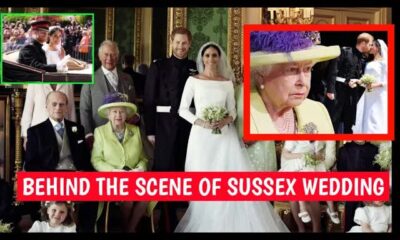Must Read
Queen Elizabeth II’s Legacy: How She Protected Princess Charlotte’s Royal Status
Britain is in a state of mourning as the nation grapples with the news of Queen Elizabeth II's passing at the age of 96.
After an impressive 70-year reign, she leaves behind a lasting legacy that will be remembered for generations to come.
One notable aspect of her reign was the thoughtful gesture she made to secure her great-granddaughter, Princess Charlotte's, rightful place in the royal line of succession, according to the Daily Express.
Princess Charlotte, the daughter of the Duke and Duchess of Cambridge, holds a significant position as the middle child between her older brother, Prince George, and younger brother, Prince Louis.
Like Queen Elizabeth's own daughter, Princess Anne, Charlotte faced the possibility of being pushed down the line of succession due to her gender.
However, the Queen took action to rectify this unfair practice before the birth of Prince William and Duchess Catherine's first child.
In 2013, the Queen introduced the Succession of the Crown Act, which aimed to modernize outdated and discriminatory laws surrounding the monarchy.
This act abolished male primogeniture, ensuring that the firstborn child, regardless of gender, would have an equal right to the throne.
It also removed the disqualification from inheriting the throne by marrying a Catholic and repealed the Royal Marriages Act of 1772, which required the sovereign's permission for the first six in line to the throne to marry.
The Queen didn't stop there.
She also made changes to a 1917 Royal Warrant that would have prevented Prince William's children from taking on HRH (His/Her Royal Highness) titles.
This alteration mirrored a change made by her father, King George VI, in 1948, which allowed his grandchildren to carry royal titles.
Under the previous warrant, the children of Princess Elizabeth of Edinburgh (later Queen Elizabeth II) would not have been entitled to HRH styles and titles.
Only male children of a sovereign were eligible.
However, in 1948, George VI issued letters patent to rectify the situation and ensure that Elizabeth's children would enjoy the HRH style and be titled as Prince or Princess.
The Queen faced a similar predicament when it came to the birth of Prince George, her great-grandson.
According to George VI's 1917 warrant, he would have been born without royal style or title.
To resolve this, the Queen issued letters patent, just as her father had done, securing Prince George's rightful status as a member of the royal family.
Queen Elizabeth II's dedication to updating and modernizing royal laws has not only safeguarded Princess Charlotte's position in the line of succession but also paved the way for a more inclusive and equitable monarchy.
Her actions have ensured that gender will no longer be a factor in determining who inherits the throne, setting an inspiring example for future generations.
As Britain mourns the loss of its beloved Queen, the nation can take solace in the enduring legacy she leaves behind.
Queen Elizabeth II's commitment to fairness and progress will be remembered as a defining characteristic of her reign, and her impact on the monarchy will continue to shape the future of the British royal family.








































